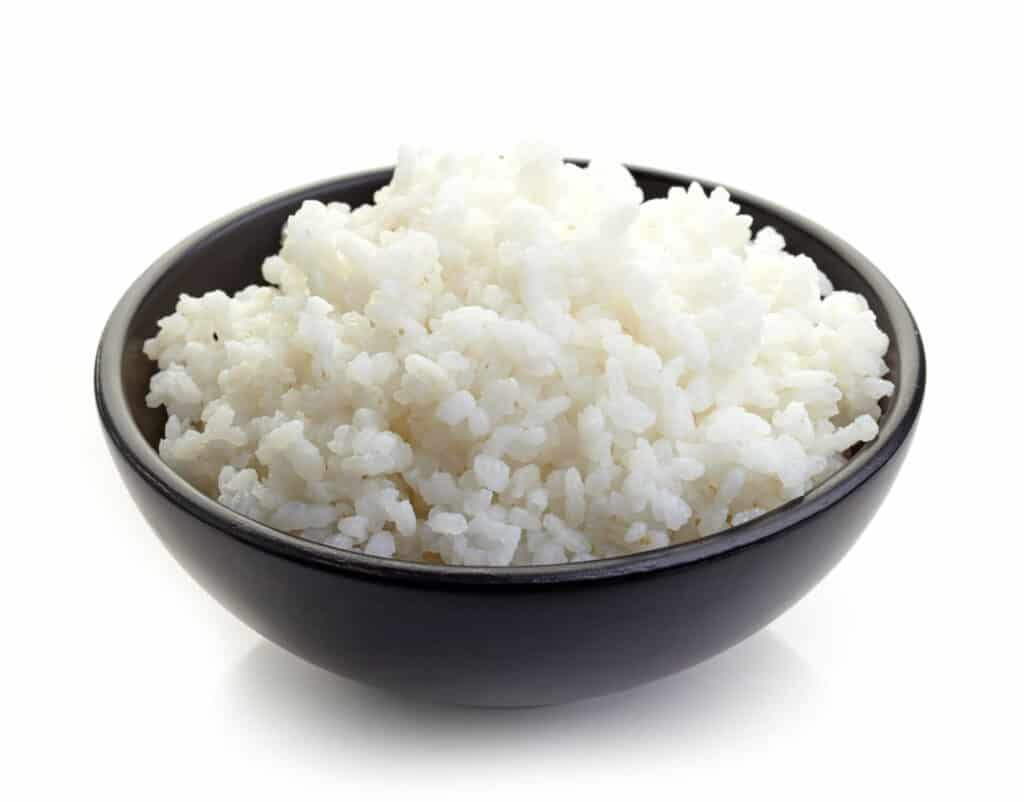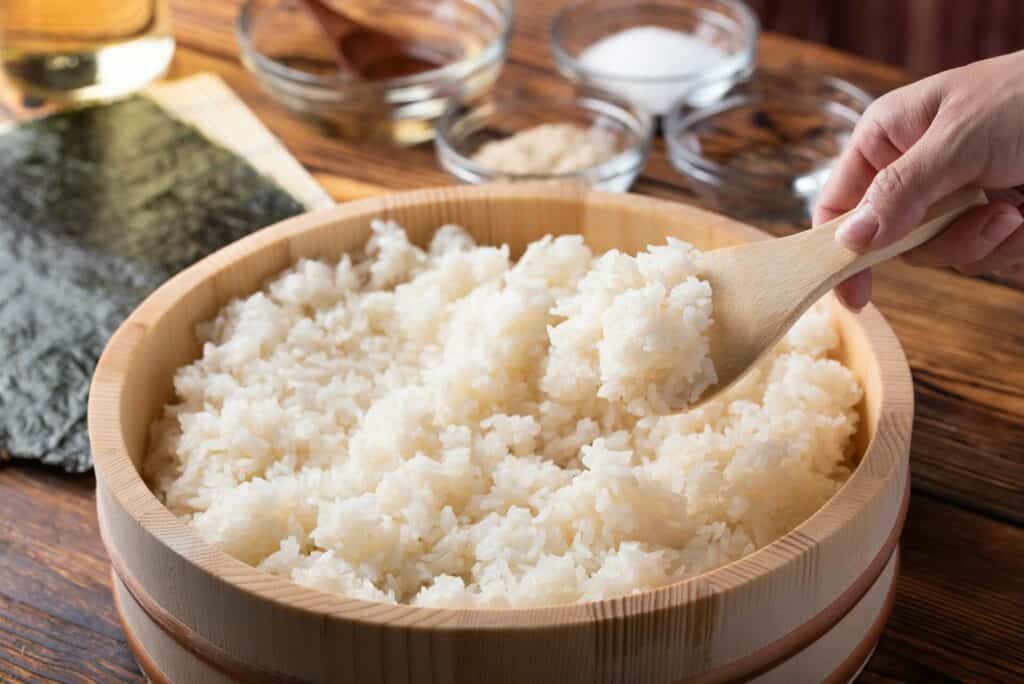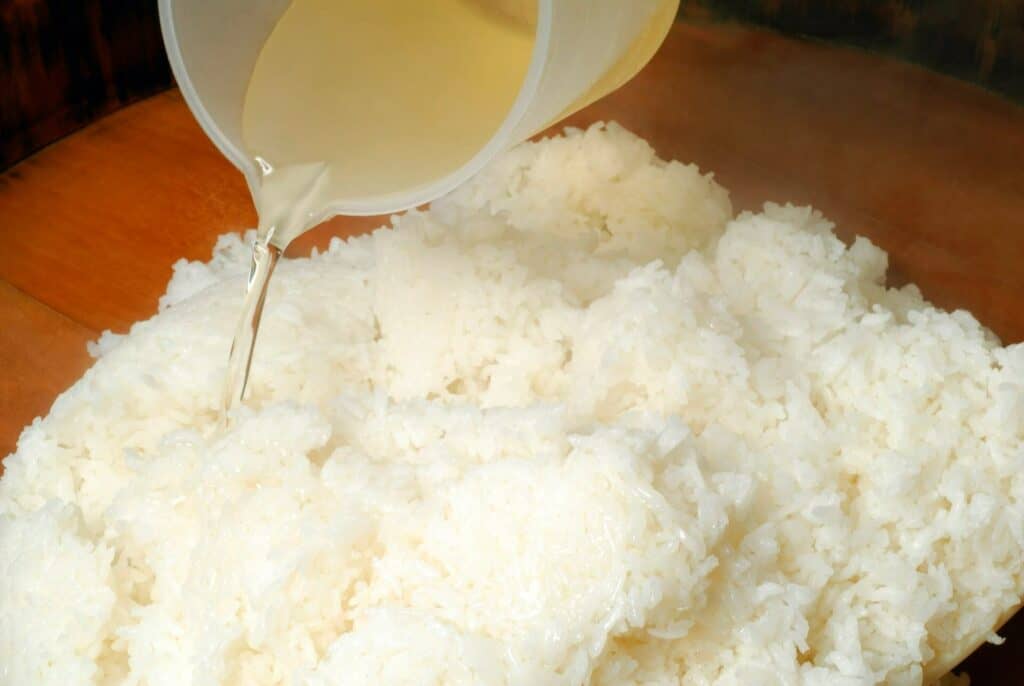You may have heard the word ‘dashi’ when Japanese food is mentioned, but what is dashi sushi rice? Is it a different kind of sushi rice, or is there a seasoning secret that the Japanese use to make their dishes delicious and nutritious? We’ll learn more about this rice and dashi today.
So, what is dashi sushi rice? Dashi sushi rice is a type of sushi rice that has been cooked in dashi, a Japanese fish and seaweed broth. The dashi imparts a subtle flavor and aroma to the sushi rice, which pairs well with most types of seafood. Dashi sushi rice can be made at home using store-bought dashi or by making your own dashi from scratch.


Dashi is a broth made of kombu seaweed and bonito flakes. It is an essential ingredient in Japanese cuisine and has an incredible amount of brain nutrient called glutamate.
Sushi rice is cooked in this broth, which gives it a strong umami flavor and nutritional benefits.
What Is Dashi Sushi Rice? Getting the Best of Japanese Flavors
Dashi is a broth made of two simple ingredients – kelp or konbu in Japanese and bonito flakes. Dashi is generally used as a base for numerous Japanese dishes and is integral to bringing the flavorful punch to each.
If something’s yummy and nutritious, it has dashi in it.
Essentially, dashi is a part of sushi in many ways. The Japanese chefs cook rice in this broth, and before commercial soy sauce was a thing, they made their own using dashi as a base. This sauce was called nikiri and had a more subtle taste than aromatic soy sauce.
The Secret Is to Cook the Rice In Dashi Broth
How and why sushi rice ends up delicious and nutritious always lies in using kelp and bonito flakes. These are protein-packed ingredients that contain many nutrients our body needs. Rice doesn’t have any gluten, so combining these ingredients is ideal.
The secret of excellent sushi rice is cooking it in the dashi broth, which we’ll detail in the recipe below.

Before the Recipe, Let’s Explore Dashi, Its Origins and Nutrition
The umami flavor of the sushi rice lies in this potent broth. Dashi is a stock used for making soups, boiling noodles and rice, and as an additive to simmering liquids that lack a bit of that oomph, also known as umami.
Around 1908, the first dashi flavor was identified; the famous Japanese chemist Kikunae Ikeda concluded that the human taste receptors react highly positively with the taste of glutamic acid, which is in konbu or kelp.
Over time, other dashi variations have been made, like niboshi dashi made from sardine flavoring and shiitake dashi made by soaking dried shiitake mushrooms in water. However, konbu dashi is still the most popular and the best one to use.
Here’s a chart overview of the nutritional values of 1 cup of dashi broth.
| Nutrition / Amount | Total | Daily Intake Percentage |
| Calories | 37 | 1,85% |
| Total Fat | 1.9g | 3% |
| Cholesterol | 2.3mg | 1% |
| Sodium | 363mg | 15% |
| Potassium | 336mg | 10% |
| Carbohydrates | 0g | / |
| Protein | 5.3g | 10% |
You Can Also Make Broth for Other Meals and Soup With Dashi
There are other ways to enjoy and savor dashi flavors. Most notably, you can do that by cooking miso paste in it. It’s commonly used in broths and soup bases, especially miso ramen.
The combination of miso and dashi provides a unique insight into typical Japanese dishes and their exploration of natural flavors.
How to Make Miso Soup With Dashi Broth
The basic miso soup has three essential ingredients – miso paste, dashi, and its ingredients, typically seaweed, tofu, and shiitake mushrooms. Here’s how to make miso soup at home in a few easy steps:
- Cook dashi – find kombu seaweed and bonito flakes at your nearest Asian products store; many grocery stores have them, too. If not, you can find pre-made dashi in stores, too, like the Kayanoya Dashi packet and the Shimaya Dashi Powder,
- Put the miso soup ingredients in the broth and cook them first – if you have onions and carrots, put them in while the dashi is cold; if you have tofu, seaweed, green onions, and noodles, put them in while the dashi is simmering,
- Add miso paste – you can mix 2-3 types of miso paste, as long as it’s not more than two tablespoons. One serving of miso soup has 200ml, so one tablespoon of miso is enough for that amount. The vital part is adding miso just as you finish cooking – this gives the soup its distinct flavor.
How to Cook the Perfect Sushi Rice With Dashi
Now, on to making the real deal – dashi sushi rice. It’s easier than you can imagine and very quick. Here’s what you’ll need:
- 5 cups of sushi rice or short-grain Japonica white rice,
- 5 cups of cold water,
- Strips of konbu seaweed,
- Bonito flakes (optional but give extra flavor to dashi,)
- 1 cup rice wine vinegar,
- 1 1/2 tablespoons of rice wine,
- 1/2 cup of sugar,
- 3 tablespoons of salt.
Start by cooking dashi broth first – add the konbu and bonito flakes in cold water and bring it to a boil. As soon as it starts to boil, remove from heat, take out the seaweed and bonito, and let the broth cool to room temperature.
Wash out the rice from starch, add it to the dashi broth and let it cook for 15-20 minutes. While that’s cooking, make sushi vinegar to add as seasoning – mix the rice wine vinegar, rice wine, sugar, and salt; bring to a boil and remove from heat.
Pour the still hot sushi vinegar into the cooked rice and mix it well. After that, let the rice cool to room temperature in a bowl covered with plastic wrap, and then use it as soon as it reaches the desired temperature.
You can use pre-made dashi powder or mixture and regular white vinegar instead of rice vinegar. Replacements and shortcuts are welcome in this case.

Dashi Is the Flavor Boost You Never Knew You Were Missing
If you’ve not heard of dashi before today, this may have opened your sights to new flavors you could try. For any lover of Japanese cuisine, dashi is an essential ingredient to know of and try.
Luckily, it’s not a complex thing to make so that you can achieve similar results from the comfort of your home. I think you’ll enjoy cooking a lot more now that you know some more secrets of prominent Japanese chefs and cooks.
